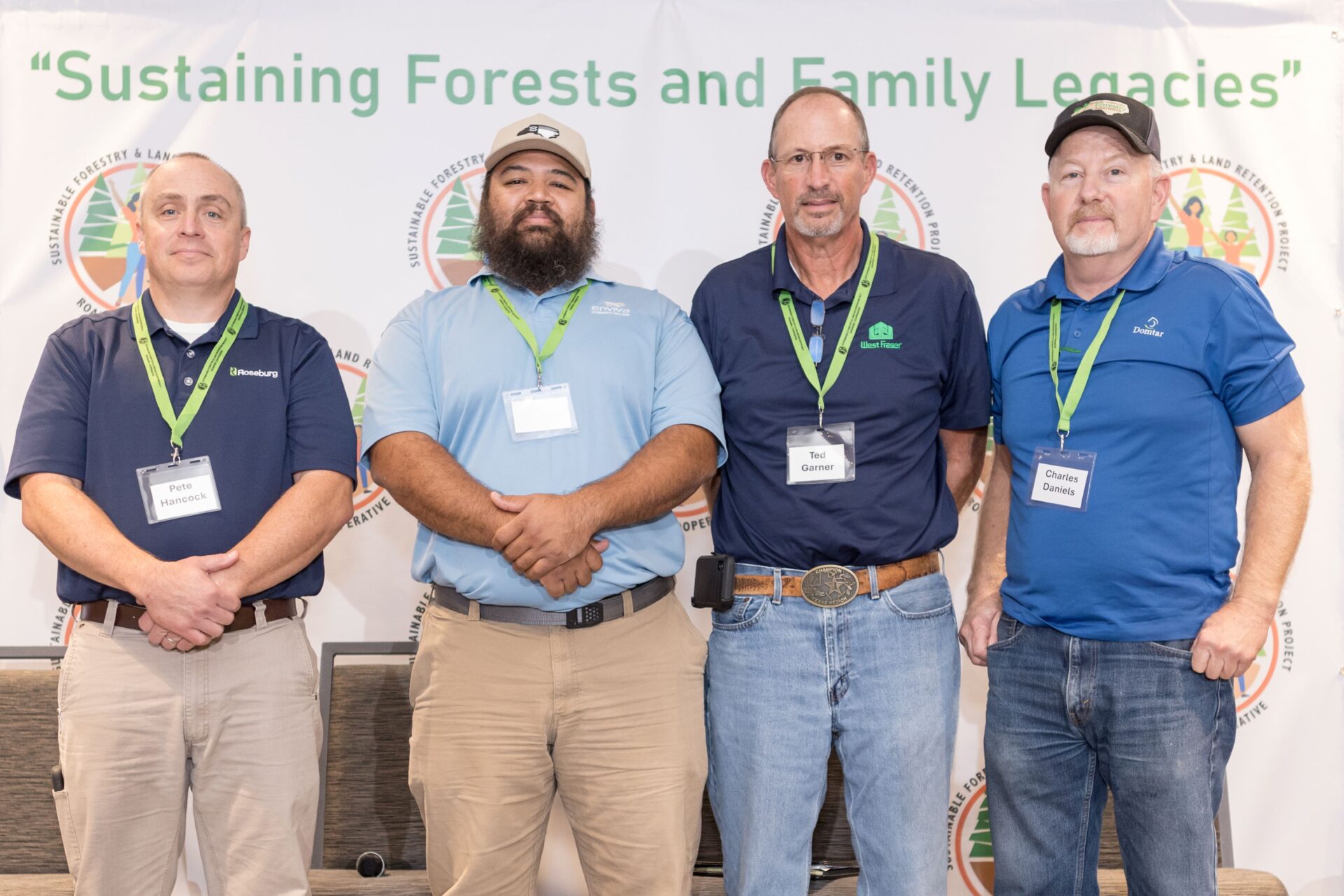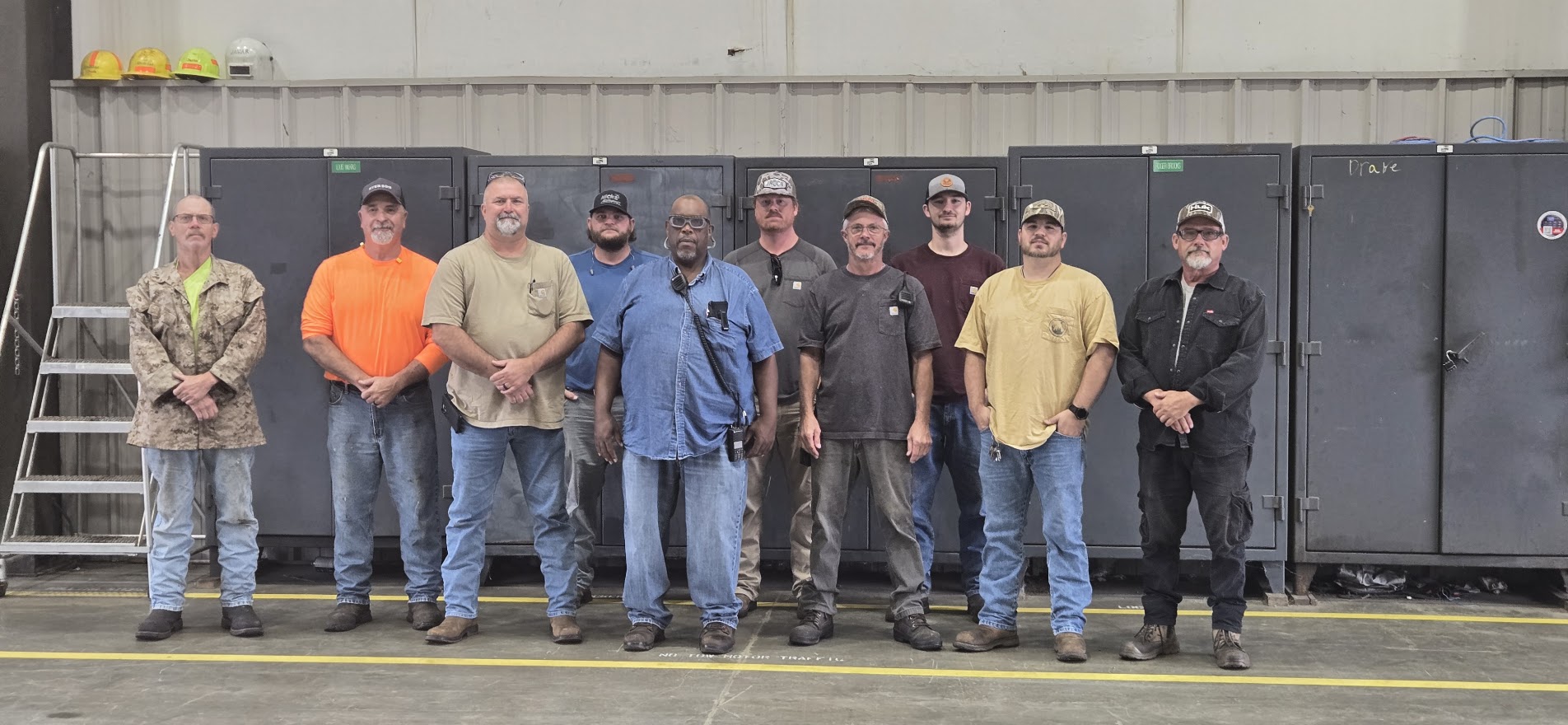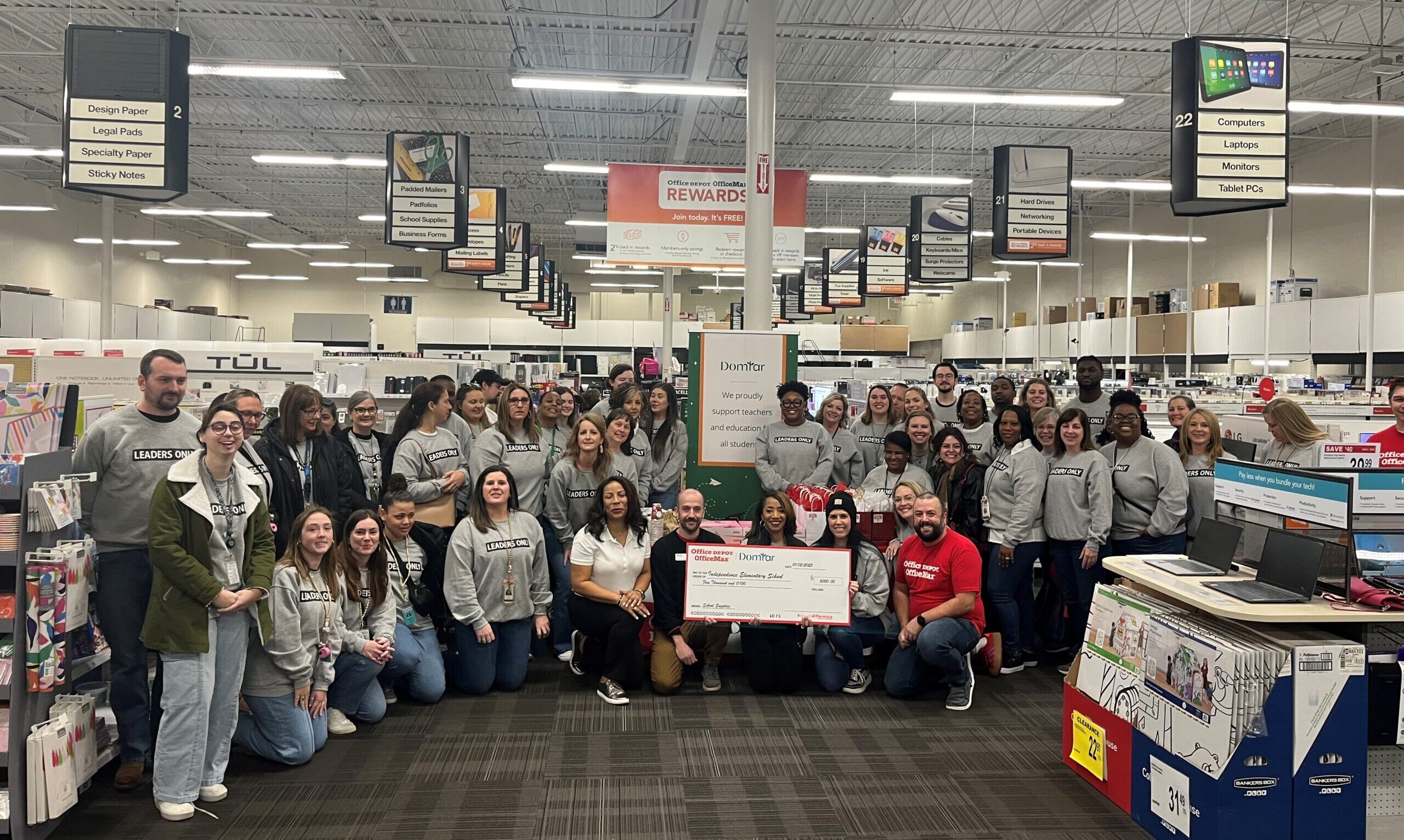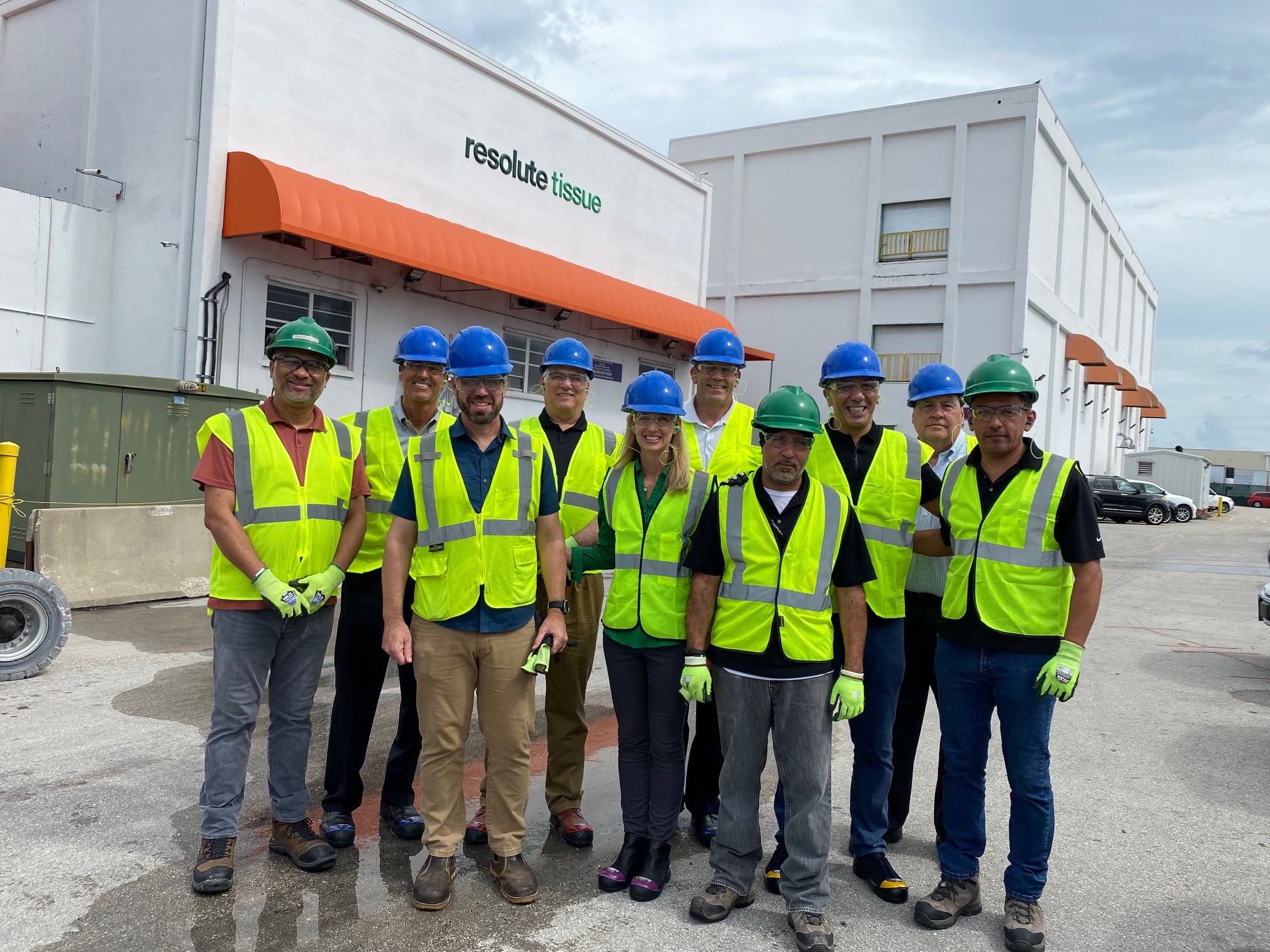A recent conference attended by more than 150 landowners, consulting foresters and forest industry representatives gave attendees a chance to discuss the challenges private landowners face, as well as the forestry resources that are available to assist them in managing their properties. The two-day conference, which was organized by the Sustainable Forestry and Land Retention Project (SFLRP), was sponsored by forest industry organizations, agencies and businesses, including Domtar.
Since 2013, the SFLRP has assisted forest and farm landowners in eastern North Carolina and surrounding counties in managing their privately owned tracts, with the goals of forest health, land retention and intergenerational wealth. Established by Roanoke Cooperative, the project initially focused on assisting African American landowners, who have lost more than 90 percent of the 16 million acres of U.S. farmland they held in 1910. The SFLRP has since expanded to provide service to anyone in the region who owns and manages a minimum of eight acres of contiguous forestland.
“We strongly believe in landowner education,” says Alton Perry, SFLRP director. “We help landowners understand the forestry industry, sustainable forestry principles and the forestry resources that are available to them.”
Understanding Forestry Resources
The event, held in October, included three panel discussions and an exhibit hall, where landowners could network with organizations like the Black Family Land Trust, Inc., the U.S. Department of Agriculture (USDA) Farm Service Agency, the Center for Energy Education and forestry companies that purchase timber from private landowners. Presentations touched on issues such as land management, succession planning, profitability and available forestry resources.
A landowner panel gave participants and audience members an opportunity to talk about their goals and how the SFLRP and its partners have helped them meet their objectives. A second panel featured consulting foresters, who help landowners understand the value of their timber and how to make the most of their land through available forestry resources. A final panel included forest industry foresters — people who work with forest industry companies like Domtar to help manage forestlands and maximize timber production while following sustainable forestry practices.
“Landowners, particularly those with smaller acreage, may wonder how they can get their timber to market. And many, specifically African American landowners, have never used consulting foresters or contracted with forest industry foresters. Either they didn’t know about them, or they didn’t trust them,” Perry says. “These panel discussions were all about developing trust. Once you develop that trust, then those landowners are more receptive to what the consulting foresters and forest industry foresters have to say, and the solutions they offer to the challenges of getting those small tracts to market.”
One of the panelists was Domtar’s own Chuck Daniels, procurement forester for Plymouth Mill. Daniels has a unique perspective as a forest industry forester because he is also a private landowner.
“At Plymouth Mill, we are roughly 80 percent dependent on small landowner timber to source our mill. Twenty percent comes from large landowners, but the lion’s share of our wood basket is made up of small private landowners,” Daniels says. “All landowners are different. Some want to manage their land so they can have wildlife, protect natural water sources, host family events, enable tourism, whatever it may be. My soapbox is that when you’re managing for timber, you’re also benefitting all these other things. They’re complementary goals, not exclusive goals.”
He adds that he’s proud to support the SFLRP in its mission to help African-American landowners retain or regain land ownership. “In the vast majority of cases, land ‘loss’ involved the legacy of the land not being passed on, primarily due to the children inheriting the land, then agreeing to sell the land and moving away. I am glad that many of these individuals (in many cases the grandchildren or even the great-grandchildren of the original owners) are now returning and trying to re-establish the legacy,” he says. “I want to assist in any way I can.
A Landowner’s Perspective
Dr. Terri Wade-Lyles, an Ohio-based education consultant who owns 22 acres with her son in Edenton, North Carolina, attended the event and says she’s been grateful for the education and assistance provided by the SFLRP since purchasing her tract.
“Buying land seemed like a beautiful way to bring the family together because we are all environmentally conscious and interested in conservation. It’s something to pass on as a legacy for my children,” she says. “But there’s more to property ownership than I imagined. When we first bought the land, we wanted to clear some of it, but we didn’t realize the wetlands map was incorrect, and before we knew it, we had a river on our property. It took us two years to restore it. It’s been a journey.”
Wade-Lyles contacted the USDA and the National Resources Conservation Service (NRCS), and eventually she connected with SFLRP. Those organizations put her in contact with other landowners and forestry resources. “It’s become a community for me so I don’t feel so overwhelmed, and I can get the advice I need, which is especially important if you’re an absent landowner. The encouragement and education we get from SFLPR and NRCS go hand in hand and help us understand how to preserve and conserve what we have.”
Every Landowner Makes a Difference
Daniels says preservation and conservation are critical for landowners, the environment and the forest products industry.
“It’s like a circle of friends who depend on each other. The landowners need the market to give them incentives to manage their land and to have a legacy to pass on to the next generation,” he says. “The enemy of sustainability is conversion. If landowners don’t have a market for their wood and access to forestry resources, then the chances are high that the land will be converted to some other use. So, there’s a circle of good management and having a market for the wood, with the added benefit of recreation, wildlife, a healthy environment, clean water — they all complement each other.”
Perry agrees and says the key for small landowners is to take a broad view of their place in the industry. Just because they’re not large industrial landowners doesn’t mean they can’t contribute to the forest products industry or play an important part in conservation.
“From 10,000 feet, you don’t see property lines or demographics. When you start looking at solutions to climate change, it’s going to be a collective effort,” he explains. “If you’re part of that collective, you’re also part of a global economic system. Small landowners may think, ‘My 10 acres of woods are not going to make any difference.’ But when you impress upon them that they are part of a collective solution — whether it’s traditional markets, emerging markets, good clean water, a strong economic industry for forestry — now they see themselves differently.”







